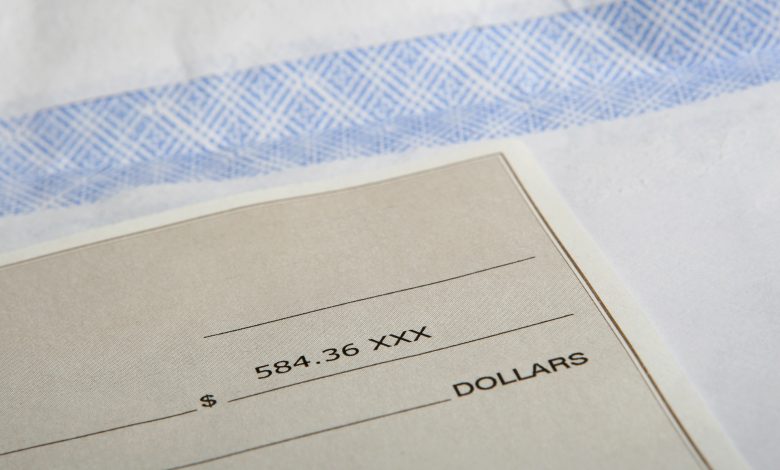
Before sending out paychecks, a company is required to withhold payroll taxes for its employees. The amount is based on the federal withholding rate, minus “allowances” (i.e. credits or deductions), such as childcare expenses. Working individuals report these allowances on the Form W-4. However, the IRS is changing paycheck withholding rules because the 2019 W-4 filings created a lot of confusion. The government introduced the new version of the form in order to make things simpler and easier. For example, if you work a full-time job and have an additional source of income (such as freelancing), the 2020 W-4 changes will allow you to have your main employer calculate and deduct that from your paycheck.
After all, withholding rules exist so that working individuals don’t have to set aside the taxes themselves and send them to the IRS each year. Nonetheless, the new W-4 doesn’t automatically make things less confusing. In fact, most employees didn’t update their 2019 W-4s, even though the tax laws changed. This partially contributed to the problem, especially since the federal withholding rates impact every household’s budget.
The IRS is changing paycheck withholding rules to make things simpler. Taking advantage of this will allow you to save time on future tax returns and, in some cases, bring home a bigger paycheck. Above all else, it makes refunds more predictable and less surprising.
The 2020 W-4 Changes
A Company Is Required to Withhold Payroll Taxes for Side Jobs
If you work as a freelancer or an independent contractor, you probably know that filing taxes isn’t easy. To clarify, self-employed individuals receive their earnings in full, and their payers don’t withhold any taxes.
As a result, freelancers and independent contractors must calculate their own tax rate and set the money aside. This is a problem because budgeting for freelancers is difficult, to begin with.
The IRS, however, is changing paycheck withholding laws for self-employed people. Instead of personally saving for taxes, you may ask your employer to withhold the amount out of your paycheck. This is even more advantageous because the company’s HR department is in charge of calculating your income bracket and federal withholding rate.
In short, the 2020 W-4 changes will make self-employment taxes less time consuming. Therefore, freelancers can dedicate that extra time towards earning additional revenues and growing their business.
Moreover, they may do so without having to worry about not saving enough for taxes and/or incurring late payment penalties from the IRS.
The Federal Withholding Rate: Getting a Bigger Paycheck
Needless to say, if your employer withholds taxes for your additional side-income, they will send you a smaller paycheck. You may offset this by the fact that you don’t need to set part of your freelance earnings aside for taxes.
However, what if someone only has one source of income? The updated W-4 could allow them to bring home a larger paycheck.

Under the new tax laws, consumers have a bigger standard deduction and more childcare credits that they may claim.
Since the previous, 2019 W-4 applied to the old tax code, it made it difficult to take advantage of these credits and deductions. Nonetheless, the 2020 W-4 changes accommodate these expenses.
Taxpayers will pay a lower federal withholding rate and, at the same time, claim more allowances. Consequently, a company is required to withhold payroll taxes for employees based on the updated deductions and credits.
In other words, employers will send the worker a bigger paycheck.
Don’t Count on Refunds
Many households rely on their tax refunds. However, since the IRS is changing paycheck withholding rules, your annual refund will likely get impacted. This is even more likely because the government recently overhauled the entire tax code.
If your tax rate went down and/or your allowances went up, you will certainly get a larger paycheck. Yet this also means that your refund is going to decrease.
The same applies to individuals who make a side income and report it on their W-4. Sure, your company will calculate what you owe and withhold that amount, but you may still end up paying the IRS if you decide to include plenty of deductions or credits.
To clarify, whether you end up getting a refund or not is uncertain. This doesn’t mean that you shouldn’t rely on it. Instead, you must always keep in mind that the amount may not be the same as what you received in previous years.
It might take another one to two years until your refunds become consistent and easy to define.
Why Not Use the 2019 W-4?
In spite of the 2020 W-4 changes, employees don’t have to file a new form, particularly if they did so in the past. In those cases, a company is required to withhold payroll taxes for its workers based on their previous W-4 filings.
This may sound like the easiest approach. Yet it is also part of the reason why the IRS is changing paycheck withholding policies.
During the 2019 filing season, only 20% of employees updated their W-4, even though the federal withholding rate and overall tax code changed. As a result, their documents were misaligned with what they owed or didn’t owe.
Many Americans didn’t receive their usual refund, which was an unwelcome surprise. Some got a smaller amount, while others ended up owing money.
Because of this, to avoid confusion and financial uncertainty, taxpayers should update their 2019 W-4. Even if your expenses didn’t change, the way that the tax law treats them did.
Furthermore, employees only need to update their W-4 once. After that, they may keep using the same form in future years.
The IRS Is Changing Paycheck Withholding Rules: What’s Next?
Most taxpayers will appreciate the 2020 W-4 changes. The new form allows you to include additional sources of income. Equally as important, a company is required to withhold payroll taxes for your side earnings.
Additionally, working individuals may receive a larger paycheck when they add childcare allowances and an expanded standard deduction to their W-4s.
However, all of this means that you should keep a close eye on your annual refunds, which will most likely change.
Firstly, to enjoy these advantages, employees must file the new W-4 this year. Otherwise, a company is required to withhold payroll taxes for workers based on past W-4 submissions. These are outdated in comparison to the recently-overhauled tax code.
Sure, filling out a new form may seem like a time consuming process. In the short term, it is certainly easier to use the previous document.

Yet by taking a few hours to redo your W-4 for the entire year, you could bring home several hours’ worth work each week. Equally as important, you don’t need to update the same form in the future if your expenses stay the same.



